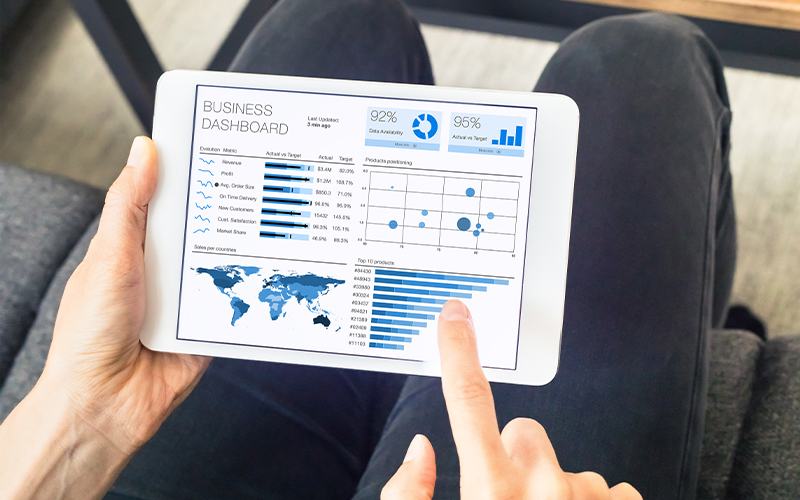BPM Analytics
Improve business decision-making with four types of data analytics
With mountains of raw data available, it becomes imperative for businesses to analyse it to enable better decision-making as well as enhance sustainability and profitability.
In this regard, the field of data analytics has developed rapidly during recent years to provide a variety of options to businesses that wish to structure, decode, and draw meaning from data.
However, it’s not a one-size-fits-all solution. This blog discusses the most popular types of data analytics that forward-looking businesses can leverage according to their unique needs and strategies.
Four types of data analytics that aid in business decision-making
Data analytics may seem like a blanket concept for the uninitiated, but that’s far from the truth. Different types of business analytics serve different purposes. While some can be used in isolation, they produce the best results when they are applied strategically and used sequentially - in a logical chain.
A simple way to categorise different data analysis methods and types is by asking the following questions:
What happened?
Why did it happen?
What could happen in the future?
How can we respond to those potential future events?
The answers to each of the above questions are provided by the following four types of data analytics:
Descriptive data analytics
It’s a class of analytics that lets users condense big data into useful nuggets of information. About 90% of companies use descriptive analytics today to record and understand past successes and setbacks. It helps answer questions like how many, when, where, and what in the hindsight and serves as the key ingredient for reporting.
Diagnostic analytics
When you have a lot of data available, diagnostic data analytics lets you understand past events and derive meaningful insights. This is critical for businesses that want to uncover why they missed profit margins on their products, for instance. It uses methods such as drill-down, data discovery, data mining, and correlation to establish probabilities and likelihoods.
Predictive data analytics
Businesses use predictive analytics to identify trends, correlations, and causation. This model looks at past data at a granular level to forecast what might happen in the future using machine learning (ML) and statistical modelling. Predicting trends, consumer sentiment and behaviour, inventory levels, and competitor strategies let businesses stay one step ahead of their competitors.
Prescriptive data analytics
Prescriptive analytics goes beyond predictions and makes recommendations in real time. In this type of analytics, artificial intelligence (AI) and big data can together help predict outcomes and identify actions that can best improve business KPIs.
Using advancements in ML, prescriptive analytics can help answer questions such as What if we try this? and What is the best course of action now?
Enterprises use prescriptive analytics for inventory scheduling in supply chains, production optimisation, and even fraud management in retail.
Together, these four types of data analytics help improve decision-making, enhance operations, manage resources more efficiently, and mitigate risks.Business intelligence (BI) is aided greatly by the types of data analytics mentioned above, but often users abandon analytics due to complex data preparation processes.
Embedded analytics: Taking the hassle out of data preparation
What if your teams could spend less time searching for, extracting, and preparing the data and spend more time in data analysis?
Embedded analytics within business process applications can help improve operational performance, fraud management, and customer experience. Integrating analytics into outward-facing applications can really improve the way clients and customers interact with your business, products, or services.
Making smarter business decisions is not just about using BI and analytics — it’s also about offering embedded analytics with your core offerings for hassle-free operations and exploring new ways of satisfying customers. The Live Enterprise suite is a key solution that can help businesses in achieving the same.*
How Infosys BPM can help?
We partner with businesses that feel the pinch of being under-resourced, want to turn inadequate procurement performance around, or need the right transformational solution with custom BPM analytics.
Target business outcomes across the analytics pyramid with our industry-leading business intelligence tools and technologies. Our BPM analytics services range from data extraction to visualisation, analysis and insight generation, and includes advisory, model development, support, and statistics and data science.
Drive process optimisation and innovation and do more with data.
*For organizations on the digital transformation journey, agility is key in responding to a rapidly changing technology and business landscape. Now more than ever, it is crucial to deliver and exceed on organizational expectations with a robust digital mindset backed by innovation. Enabling businesses to sense, learn, respond, and evolve like a living organism, will be imperative for business excellence going forward. A comprehensive, yet modular suite of services is doing exactly that. Equipping organizations with intuitive decision-making automatically at scale, actionable insights based on real-time solutions, anytime/anywhere experience, and in-depth data visibility across functions leading to hyper-productivity, Live Enterprise is building connected organizations that are innovating collaboratively for the future.






